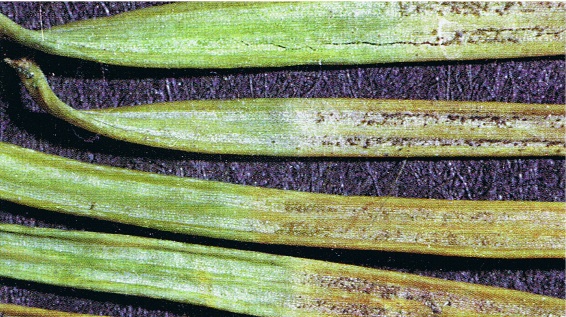PESTS AND DISEASES OF FORESTRY IN NEW ZEALAND
Rhizosphaera kalkhoffii
Scion is the leading provider of forest-related knowledge in New Zealand
Formerly known as the Forest Research Institute, Scion has been a leader in research relating to forest health for over 50 years. The Rotorua-based Crown Research Institute continues to provide science that will protect all forests from damage caused by insect pests, pathogens and weeds. The information presented below arises from these research activities.
From Scion publication An Introduction to The Diseases of Forest and Amenity Trees in New Zealand, Forest Research Bulletin 220,
G.S. Ridley and M.A. Dick 2001.
Species:
Rhizosphaera kalkhoffii (Ascomycete anamorph)
Common name:
None
Country of origin:
Northern Hemisphere
Host(s):
Rhizosphaera kalkhoffii is frequently found on Pseudotsuga menziesii but is also known to infect a range of other coniferous plants including Pinus radiata. Rhizosphaera kalkhoffii is recorded as causing needle cast of spruces in Europe and North America, and of pines in Japan.
Symptoms:
Rhizosphaera kalkhoffii is generally found on dead needles or dead portions of living needles, although occasionally it has been found fruiting on bruised green foliage. The fruit-bodies (Fig. 32) protrude through the stomata on the underside of needles in a similar way to those of Phaeocryptopus gaeumannii.

Fig. 32: Fruit-bodies of Rhizosphaeria kalkhoffii on damaged needles of Pseudotsuga menziesii
Disease development:
Ascospores are wind dispersed. The specific environmental factors, which govern infection by R. kalkhoffii and spread of the fungus, are not known for New Zealand. Rhizosphaera kalkhoffii is not considered to be pathogenic and its appearance on dead needles can usually be traced back to an abiotic event causing needle tissue damage and death. In an incident in Canterbury in 1971, stands of Pseudotsuga menziesii became heavily colonised with R. kalkhoffii, giving the impression of a disease outbreak. However, initial needle damage could be attributed to windburn from north-westerly gales.
NZ distribution:
Found throughout New Zealand.
Economic impact:
Rhizosphaera kalkhoffii is considered to have only a minor impact on stand profitability.
Control:
Not considered necessary.
References:
Hood & Sandberg 1985; Sinclair et al. 1987.
This information is intended for general interest only. It is not intended to be a substitute for specific specialist advice on any matter and should not be relied on for that purpose. Scion will not be liable for any direct, indirect, incidental, special, consequential or exemplary damages, loss of profits, or any other intangible losses that result from using the information provided on this site.
(Scion is the trading name of the New Zealand Forest Research Institute Limited.)

 Farm Forestry New Zealand
Farm Forestry New Zealand

